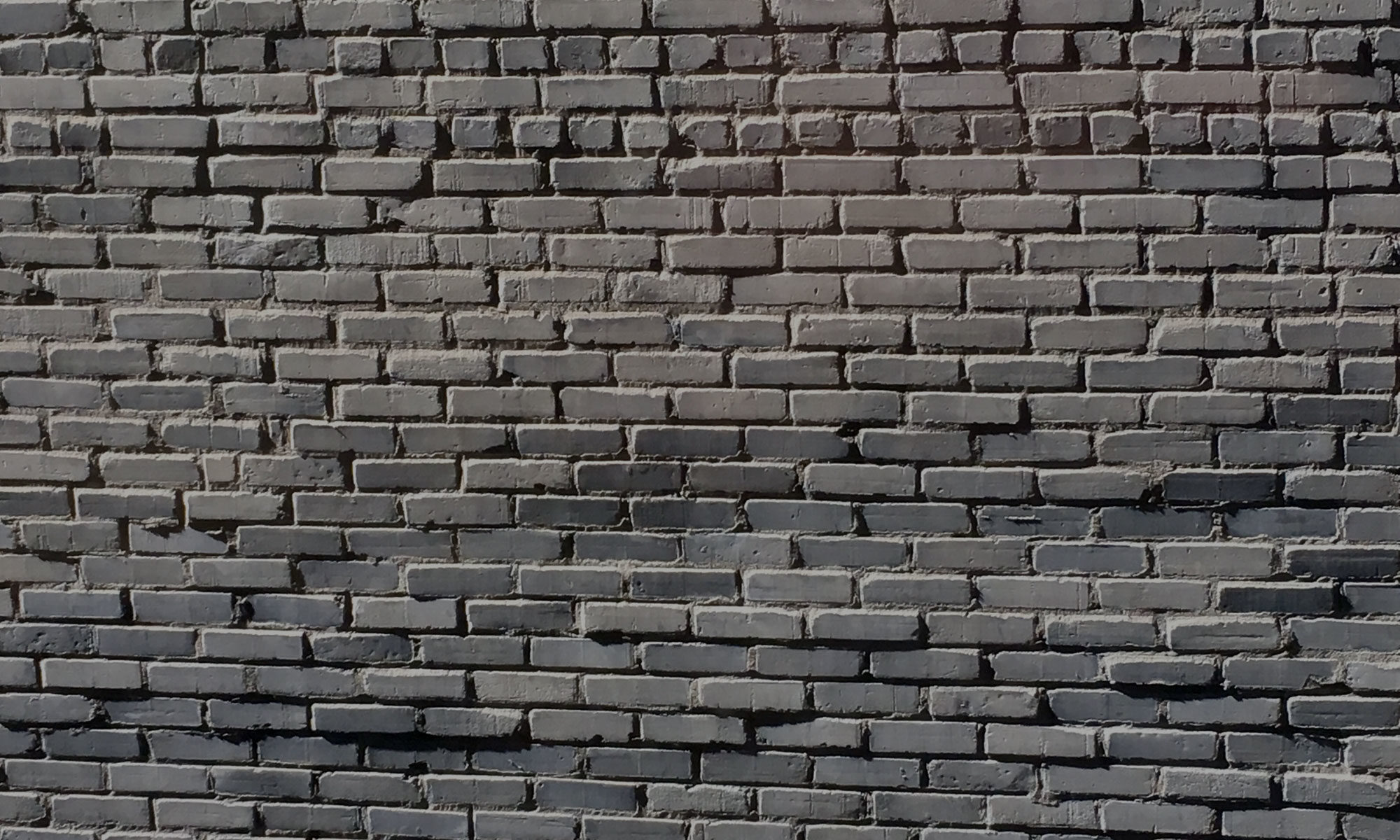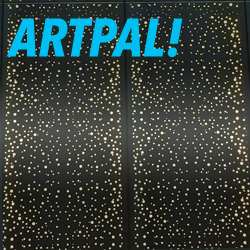Alexa Horochowski’s Vortex Drawing 17 (2017.80.6) is a striking work of art that alludes to the problem of garbage in the oceans. The difficulty of finding a lot of other works by women is an example of a different type of garbage.
FULL EPISODE TEXT
Hi there! I’m Keith Pille, your art pal.
We’re continuing our season one walk through a selection of objects on display at the Minneapolis institute of Art. In this episode, we’re going to start out talking about a work called Vortex Drawing 17, by Alexa Horochowski, made in 2017. The piece’s MIA accession number is 2017.80.6.
This is yet another piece that just kind of jumped off the wall at me as I was walking through the MIA’s galleries. I guess I’m susceptible to that. Like other wall-jumpers, this is a very large work of art, just shy of ten feet high. It’s a sheet of tyvek wall-wrap, a construction material, that’s been painted a flat black and then had light-colored pigment blown onto it with powerful fans, creating a chaotic vortex (so I guess the piece’s name is apt) that’s vaguely reminiscent of Jackson Pollock but differs in that it’s basically black and white and the vortex area has a distinct shape rather than covering the entire ground the way a Pollock does. In addition to the Pollock resonance, the piece reminds me of the graphical tracks that appear in the cloud chambers they used to use to track particles in high-energy physics. Do an image search for “cloud chamber” and I think you’ll see what I mean. I hope I’m conveying just how much presence this thing has. It really looms over you.
I don’t want to overlap too much with the piece’s gallery label, but Horochowski’s intention with this piece are really interesting to me. She’s concerned with pollution in the ocean, so the piece is an intentional reference to things like the Pacific Ocean Trash Vortex; the visual reference there is obvious, as is the one in the name. But Horochowski takes it a little further in that the white pigment is intermixed with ground up bits of the kind of trash that makes its way into the ocean. As a person who lost some sleep after reading about a sperm whale that had been found dead with 64 pounds of plastic trash in its stomach, I guess I’m exactly the target audience for this work of art.
That said, there’s actually another thing I wanted to talk about, using this piece as a jumping-off point. It does involve going a little bit behind the scenes of the creation of Artpal. As I was putting together my list of art and artists I wanted to cover in the first season, I took a step back and looked to see how I was doing on the diversity front. Or really on several diversity fronts. If you don’t pay attention, it can be way too easy to just slide into talking about nothing but art by white men. And at that stage I felt like I was doing OK on ethnic and cultural diversity, but not so much on gender; my list of artists was a little bit of a sausage party.
So I fired up the MIA’s -excellent- online collections access and just started browsing through to jog my memory on some works by women I could highlight. This Horochowski popped up pretty early on, and I remembered how much I liked it in the gallery, so I figured I could slot it in. But just to be sure, I kept browsing. And I was really pretty flummoxed by how, when you pay attention to it, the collection there skews heavily, heavily towards men. There are works by women, of course, especially more recent ones, but the skew is extremely pronounced.
Now, I want to be really clear about this: I’m not particularly calling out the MIA for this. I think their collections just reflect a larger problem that’s been endemic to western art for centuries. The art world, and the museum world that documents it, has been overwhelmingly sexist for a long, long time. I mean, think about how many art movements are represented in the public mind by a dozen men and one woman. In the renaissance, you’ve got Artemisia Gentileschi and, well, all the male renaissance artists you’ve heard of. Among the impressionists, you’ve got Mary Cassatt and, well, all the male impressionist artists you’ve heard of. And so on.
There’s actually a fantastic piece of feminist writing on the subject, an essay by Linda Nochlin called “Why Have There Been No Great Women Artists?” You should absolutely google it and give it a read. Nochlin, writing in 1971, lays out in great detail how women were systematically excluded from the art-making space by both societal rules and control of basic things like art education; if no one would allow women to go to the academies that taught men how to paint, then the only women who could learn to paint were the ones who followed very unusual paths. You read this essay and then just throw your hands up in despair thinking about all of the talent that must have gone to waste during centuries of patriarchal exclusion.
I think this is getting better among currently-active artists, and that’s awesome. Certainly the historic exclusion from art education that Nochlin talks about is no longer the case, as well as the oppressive cultural rules about who could go where and fill what societal roles (there’s a reason, for instance, that Mary Casatt painted interiors, often featuring children). But we’re maybe two or three generations into a course correction for a systemic problem that’s been in place for over a thousand years. That’s a lot to overcome.
How can I tie this back to the work we’re ostensibly talking about? Let’s say that institutional sexism is a bunch of garbage, just like ocean garbage vortex Horochowski’s alluding to. There. That’ll do.
Thank you for listening to Artpal. Again, I’m Keith Pille. You can find me on Twitter at @keithpille. If you liked the show, please spread the word or pop out to itunes and leave a review. And of course, go on and check out the rest of the season, there’s a lot more art to talk about.

